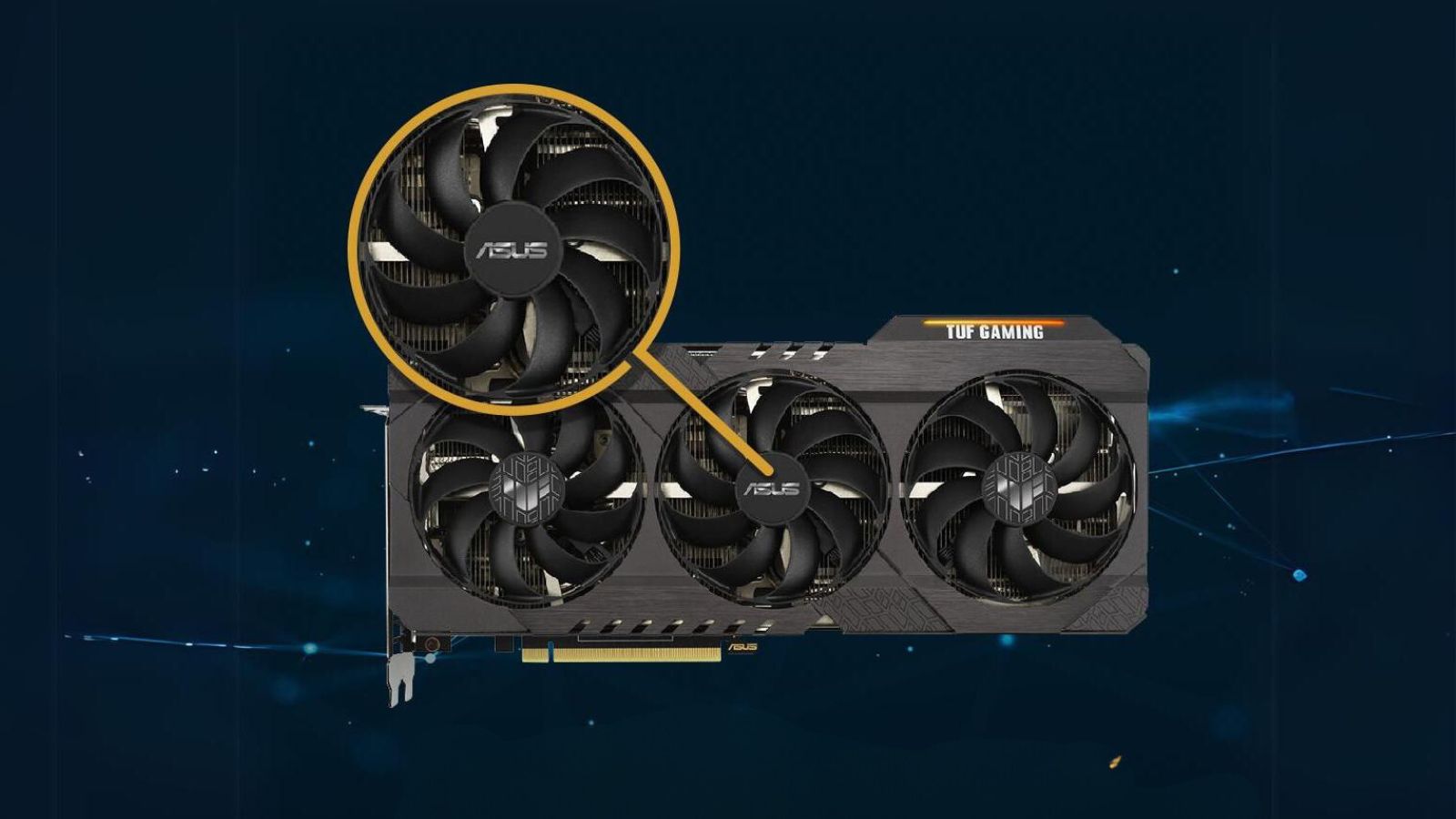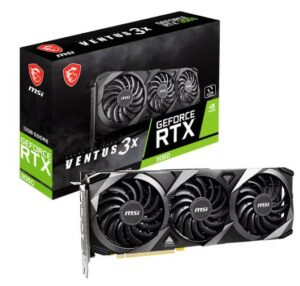Whether you are a complete beginner or a veteran PC builder who wants to touch up on your hardware knowledge – our ‘Anatomy of’ series has all the key information you need.
The ‘Anatomy of’ series has been designed to show you what goes into all of the key PC components. In this blog article, we’re covering graphics cards.
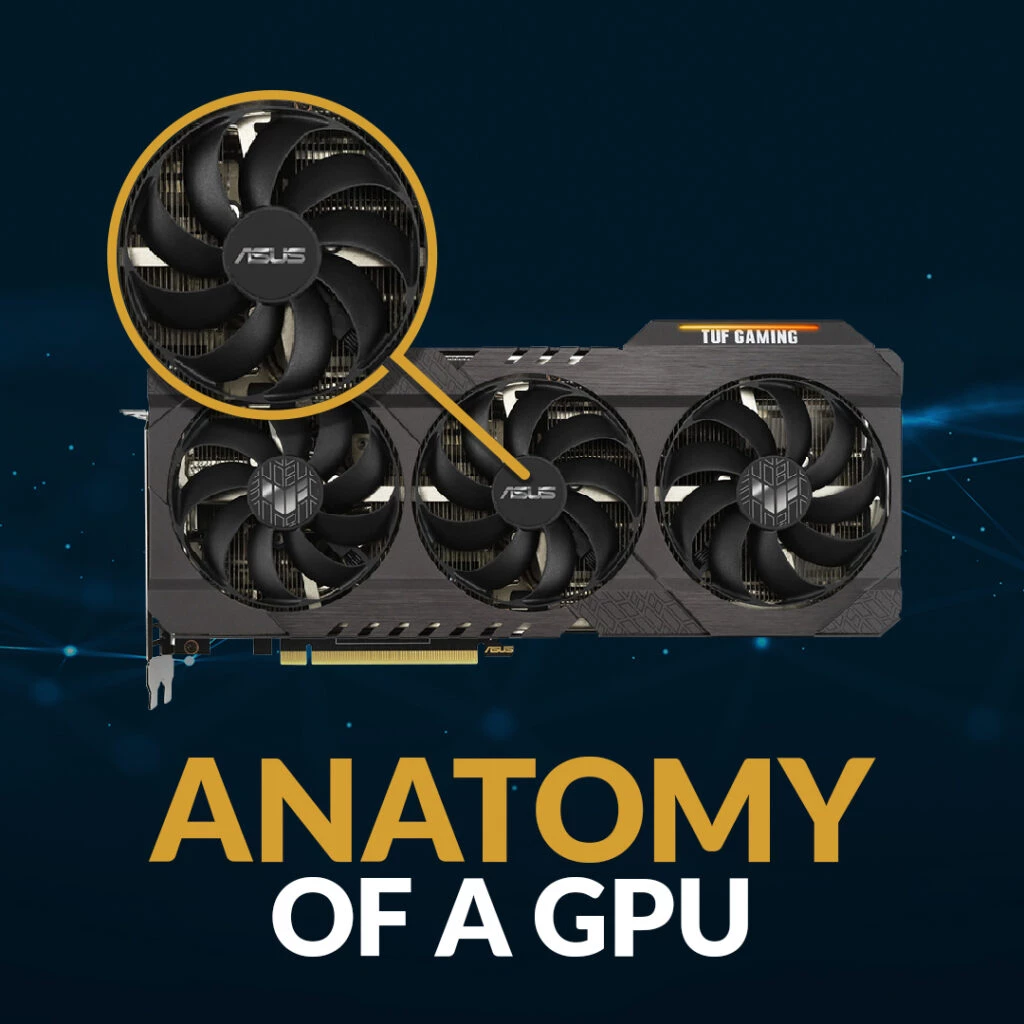
What is a Graphics Card?
Typically referred to as the ‘muscle’ of a computer, the graphics card (GPU) is responsible for displaying all images and videos on a monitor.
Some CPUs will feature integrated graphics, but for mid to AAA gaming, it’s recommended you utilise a dedicated GPU.
There is a graphics card available to suit every budget, individual requirements, and gameplay style.
- Entry-level (e.g. NVIDIA RTX 4060 / AMD Radeon 7600)
- Mid-level (e.g. NVIDIA RTX 4070 Ti Super / AMD 7800 XT)
- High-end (e.g. NVIDIA RTX 4090 / AMD 7900 XTX)
- Professional (e.g. AMD Radeon Pro W6800)
Along with being suited to a vast array of different budgets, graphics cards are available in different sizes. In fact, you can find both low- and high-profile GPUs.
Graphics Card Components
Whilst graphics cards are available in different form factors, they all feature the same core components. We’ve included a complete breakdown of each of the different components below.
Graphics Processing Unit
The graphics processing unit is where all of the transistors, CUDA cores, and streaming multiprocessors are located. It is responsible for accelerating the rate at which your gaming PC can render 3D images.
Video Memory (VRAM)
The video memory, or VRAM, serves as a separate cache for the GPU to store any crucial information it needs for displaying graphics.
Compared to standard RAM, video memory is embedded closer to the graphics processing unit which results in faster data transfer speeds with minimal input lag.
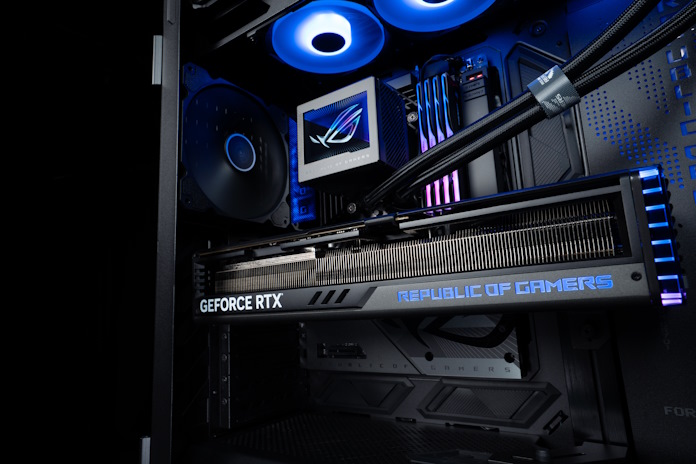
Voltage Regulator Module (VRM)
The VRM is responsible for ensuring that the GPU receives all of the necessary power at a constant steady voltage.
Graphics cards can come with varying power consumptions. Whilst some GPUs will draw power from the PCIe slot, some will require an additional connector from the power supply (PSU).
The different GPU power connectors are:
- 6-pin (ideal for GPUs that need 150W)
- 8-pin (suited for GPUs that require more than 150W. You may have just one 8-pin or two 6-pin connectors)
- 12-pin (designed for high-end/professional GPUs)
With the latest NVIDIA RTX 4090 and 4080 graphics cards requiring a lot more power, a new standard of PSU, ATX 3.0, has been created with a 16-pin 12VHPWR connector. This power connector has been designed to deliver up to 600W from one singular cable.
If you do opt for a 4090 or 4080, your chosen GPU should come with a 12VHPWR adapter.
You can read more about 12VHPWR in our dedicated blog post.

PCIe Interface
The PCIe interface or slot is how the graphics card is plugged into the motherboard. For the graphics card, you will typically utilise either the PCIe x 8 or x 16 lane.
Cooling
All graphics cards will come with an integrated thermal system that will consist of a heatsink and/or several fans.
This thermal system is responsible for drawing away heat from the core components of the graphics card to ensure it consistently performs at optimum temperatures.
Interconnection interface
The interconnection bus allows you to connect multiple graphics cards on a single motherboard for enhanced capabilities and scaling.
On AMD graphics cards, this technology is called CrossFireX. Whereas on all NVIDIA GPUs, this is called NVIDIA NVLink.
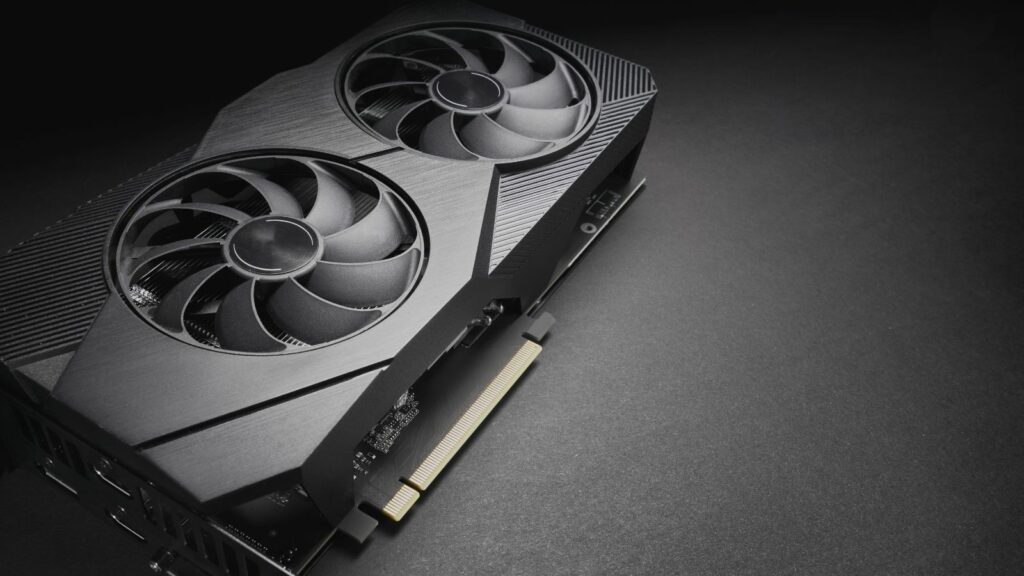
Video BIOS
Similar to the system BIOS, the video BIOS serves as a program hub where you can make adjustments to specific settings, such as the clock frequencies, fan speeds, and voltages.
Output interface
These are built onto the graphics card itself and are how you connect the GPU to a monitor. On most GPUs, you will have a DisplayPort, DVI and HDMI port.
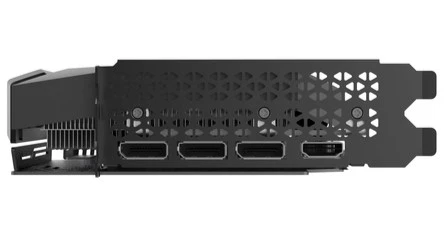
RGB Lighting
Any RGB lighting on a GPU is controlled via the motherboard’s built-in RGB software.
Shop All Graphics Cards
If you want to unlock exceptional performance and immersive visuals with a dedicated graphics card, we’ve selected a few of our favourites down below. Alternatively, you can browse all our dedicated GPUs from NVIDIA and AMD by clicking the buttons.
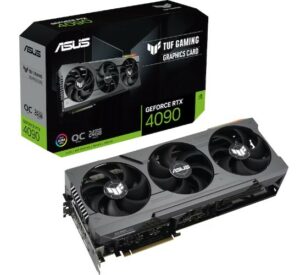
ASUS GeForce RTX 4090 TUF OC 24GB GDDR6X Graphics Card:
- NVIDIA 40 Series
- Ada Lovelace architecture
- 16384 CUDA cores
- 2595MHz boost clock speed
- 24GB GDDR6X video memory
- Compatible with Real-Time Ray Tracing
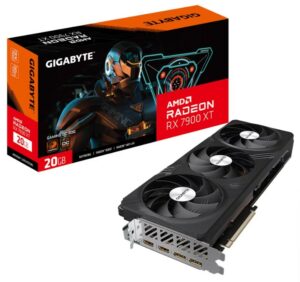
Gigabyte Radeon RX 7900 XT Gaming OC 20GB GDDR6 Graphics Card:
- AMD RX 7000 Series
- 2535MHz boost speed
- 20GB GDDR6 video memory
- FreeSync and DirectX 12 Ultimate compatible
- Support for AMD FSR 2.0
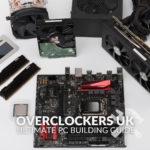
Building your own gaming PC can be a daunting task. That’s why we’ve put together the Overclockers UK Ultimate PC Building Guide.
All Your Graphics Card Questions Answered!
Best Graphics Cards for 1080p and 1440p

Best Graphics Cards for 4K Gaming

NVIDIA 30 vs 40 Series Graphics Cards
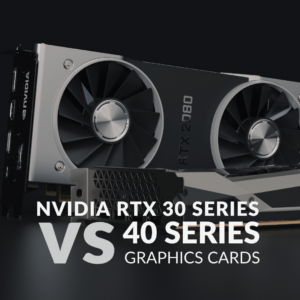
What GPU Do You Have?
Be sure to let us know what GPU you have in your PC and why.
